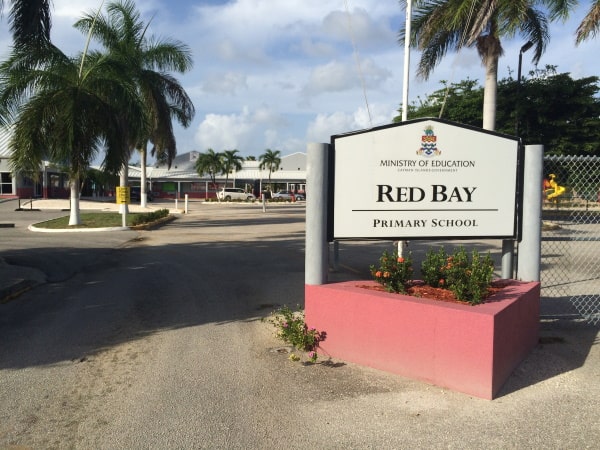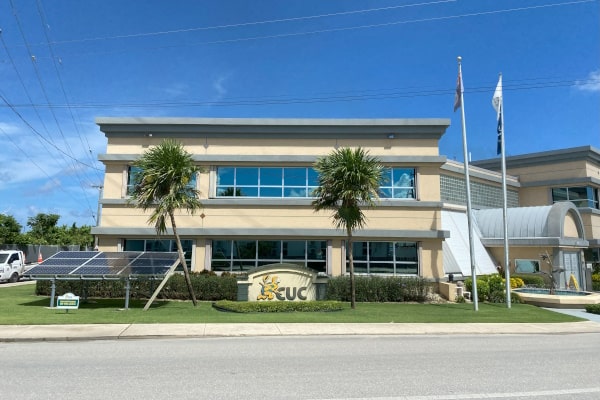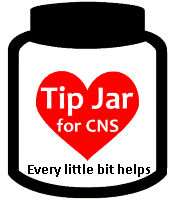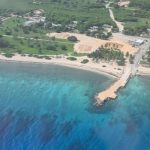Dangerous coral disease closes dive sites
(CNS): The Department of Environment has closed 45 dive sites, from Delia’s Delight in Cayman Kai across the North Sound to Bear’s Paw near the Gustus Channel, in an effort to contain an outbreak of Stony Coral Tissue Loss Disease (SCTLD). This latest threat to coral was first spotted in local waters this summer. It is largely a mystery but experts believe it might be a type of bacteria that is spread through currents and touch, and could devastate reef ecosystems if experts don’t act swiftly to address the disease.
“It is unfortunate that closing diving in areas impacted by the coral disease may cause hardships for watersports operators, but we trust that those companies affected by the closure understand that these measures are essential for the long-term health of Cayman’s coral reefs,” officials from the DoE said following a meeting and presentation on Friday with the dive sector.
“We will continue to monitor the status of the reefs and adjust the exclusion areas as necessary while actively communicating with the diving and watersports community, keeping them informed of any developments. We are all very familiar with the concept of quarantine to prevent the spread of disease. Prohibiting in-water activities at the diseased sites will similarly reduce the transmission of the pathogen to healthy reef areas,” the DoE stated.
This new disease was first discovered off the coast of Florida in 2014 and here in June this year off Rum Point, but. It is currently confined to the north wall dive sites but without significant intervention it is unlikely to stay that way. In addition to closing the sites, the DoE is creating a fire-breaker by removing some reefs at the edge of the isolated area to reduce potential spread.
DoE officials are asking the public to support the reef quarantine and to not conduct any in-water activities, such as anchoring, diving, and snorkelling, from outside of the fringing reef to the drop-off.
While scientists are still learning about this disease, Dr Croy McCoy from the DoE said it is lethal, and with its high prevalence and mortality, it is now the most virulent coral disease in the world today.
He explained that while most other coral diseases only impact one or two species at a time, this disease can impact as many as 20, thereby destroying whole colonies in a matter of weeks. McCoy said it is not seasonal and it spreads through currents and touch, possibly even from the hulls of ships, though he said the jury was still out on how it moves.
“There is still so little known about this disease,” he said. But McCoy added that Cayman has at least caught this and got to work on it early. And given the health of our reefs, DoE scientists are able to do more comparative work as they try to identify exactly what pathogen is causing it.
McCoy said the only treatments that have shown any impact so far, was antibiotic and probiotic therapeutics, which the DoE is now trying.
“Knowing what we know about this disease so far and the disastrous consequences of reef managers not intervening to mitigate against this disease… it would be an injustice if we did not intervene,” he said. “The cost and sacrifices we will ask over the next few months will be minuscule when compared to the potential financial losses associated with a collapse in our reef ecosystem,” the marine scientist warned.
He said the disease was spreading around 1.2 to 1.5 miles per month and poses a real environmental and economic loss to the country.
The disease is threatening many endangered corals and Cayman has already lost a colony of pillar coral by the North Sound Channel to SCTLD. Consequently, the disease is causing considerable alarm now for the DoE, given how quickly and easily it spreads and the amount of species being impacted.
See the full presentation by the DoE team on CIGTV below:
Category: Marine Environment, Science & Nature






































Might as well build a cruise port there then. Never been a better time.
Don’t you find it interesting/strange that the dive sites affected are all at the mouth of the North Sound? It makes more sense that the run off from development and the dump seeping out into the water flowing out from the North Sound to the sea is causing more damage than the divers have done. Most divers know not to touch the corals and for the most part obey those rules and, as said above already, the past few months have had extremely little activity by human interaction. I’m not saying we humans have had no affect on the reefs but I think the problem is caused by more than just divers and human activity nearby the reef. Plus, any divers that feel this is “unfair” can go to the more than 500 other dive sites around the island. Lets all do our part to save the reefs and oceans!
The oceans have been able to handle pollution over the years but maybe it has gotten to the point where the pollution resulting from tourism, development and other man-made entities are having an effect. When I worked in NYC I’d have lunch on a bench alongside the East River. These huge barges would go by out past NY Harbor and dump tons are garbage in the ocean daily. If I looked over the railing I could see medical debris exiting ducts from the hospitals consisting of rubber gloves and syringes. These pollutants were visible to the naked eye. The other side of the equation is pollutants NOT visible to the naked eye caused by run-off of various chemicals in use around the island, human waste leeching into the ground and ultimately into the ocean exacerbated by increased volumes brought about by increased volumes of people visiting GC. Many ships of all kinds, although prohibited, dump their waste in the oceans. So the corals and other sea-life are having to contend with increased pollutants of various sources and degrees. At some point the oceans aren’t large enough to dilute and neutralize the new volumes of pollutants. IMHO
Believe me, after we did 7 months of work in the Florida Keys trying to contain this disease, leaving it alone will NOT make it go away. You have to proactively treat it. Half of your stony corals will be affected.
This is not good. But if diving will be even more restricted, how does that change the impetus of re-opening to general tourism anytime soon? Significant impact!!
Past time for alternative sources of revenues – national lottery, for one!
It’s time to spend less time in the water and more time at Liberty’s to decide whether you like the Caribbean or Chinese menu more.
Make the fish wear masks and keep 6’ apart zzzzz
Good luck stopping the currents from spreading it, or fish for that matter
Private sector divers. Thankfully CIG will sort this out.
They are floundering and grasping at straws. If they think stopping dive operations will help they clearly have no clue…it’s also spreading at a time when diving operations are at an all-time low so highly unlikely divers are the vector. C’mon guys it’s the ocean, not Cost U Less.
Deputy DOE Tim Austin said years ago, reefs in the lee side of Cayman “(George Town)” was dying. He even made a youtube about it. Remember, it was during the time when the Government wanted to build a cargo and Cruise ship facility. It feels so long ago, big petition, no-no, the reefs were fine, remember?
Hardly anyone dives on the North or Southside. Well, I prophesize that the winter will show the southside will get more reefs dying then. Climate change and reef dying are caused by man. We need a Filipino president to control the Caribbean sea. Once they clean up the sea it will make a big change.
Wonder if this might be the flushing of toxic chemicals from our dump. We’ve had an overwhelming amount of rain this years compared to the last 5. I guess they don’t test for toxins in North Sound which flush out through the reef that’s dying? There’s a saying in a book by V.F. Ridgeway
“What gets measured gets managed — even when it’s pointless to measure and manage it, and even if it harms the purpose of the organisation to do so”.
What a catastrophe, but it has to be said as much as we don’t want to hear it. Suppose it’s our new reality? What do we offer to tourism? Well nowhere in the tropics is diving a major draw. How about casinoes, zip lines, theme park. Walking trails and bird blinds? We need new attractions. Where is the Dept. of Tourism?
I’m going to go out on a limb and say it’s unlikely dive operations, or divers, are spreading this.
Exactly. Why is it that quarantine is the solution when no one knows exactly what the problem is?
Read the story, ‘it spreads through currents and touch,’ and who touches the reefs and kicks up the water round them – divers. This is exactly what’s happened at the Great Barrier Reef – it’s been exploited to death and all the lame excuses being made by the watersports operators can’t cover up the fact that excessive human interaction with the reefs has had a very negative effect. I’ve also seen the same happen in the Red Sea and the Maldives.
exactly but we have people here who dont believe in science. They dont all live in the usa
So a diver in the the water for 20 minutes ‘kicking up the water around them’ is spreading this, versus the current? At a time when we have virtually no divers in the water, and haven’t had for the past 8 months…yet it’s still spreading. Is that science, or a ‘got to be seen to do something’ approach?
It is not the kicking up of the water, it is the contamination of all dive gear, wetsuits, boat bilge water etc etc. Did you watch the video? If you haven’t please do to understand more. Say there is some water in the BCD bladder from the diseased site, and the diver then goes for another dive at Eden Rock, they have just spread the disease across to the Western side of the island.
The rate of death for this disease ii simply is not worth the risk for anyone- watersports operators, recreational divers, fishers, amongst all the other ecosystem benefits from the reefs we humans need to survive.
If you are not sure about the risks after watching the video, please reach out to DOE to get a further understanding. It’s very important all stakeholders understand this so that we do not spread it inadvertently.
Eg in Human terms, a person with COVID gets on a flight in London then travels to Miami – the person has carried the disease across the Atlantic, it wouldn’t have done this so easily by itself, now that passenger can infect America, and it stays on surfaces that infected person has come into contact with.
This is a similar situation of a diver who dives the north wall and gets some diseased water on their equipment then goes to another dive site on the East, West or South of the island and releases the pathogen in the water column there by entering the water, now that whole section of reef is threatened too, at a much faster rate than if only the currents are moving the pathogen.
It is definitely science.
Know who touches the reef a lot more then the odd diver who occasionally inadvertently brushes against something? Fish do. Parrot fish eat the algae off the hard corals by using their beak like mouths to scrape off the outer layer of hard corals. They then poop out the ground up coral as sand spreading it everywhere. A large parrot fish produces nearly a thousand pounds of sand per year. Some of these fish get eaten by bigger fish who then travel to other areas and poop out those remains. Turtles feed off sponges and will climb all over the coral while they feed. They travel huge distances. So which do you think is more likely to spread this around?
How dare you question the government
45 dive sites? Maybe that’s part of the problem? I can remember when there were only a handful of dive sites on North Sound. On busy days we’d often have to cruise up and down waiting for one to become free. If you couple that with run off from all the development on-shore, is it any surprise the coral is dying?